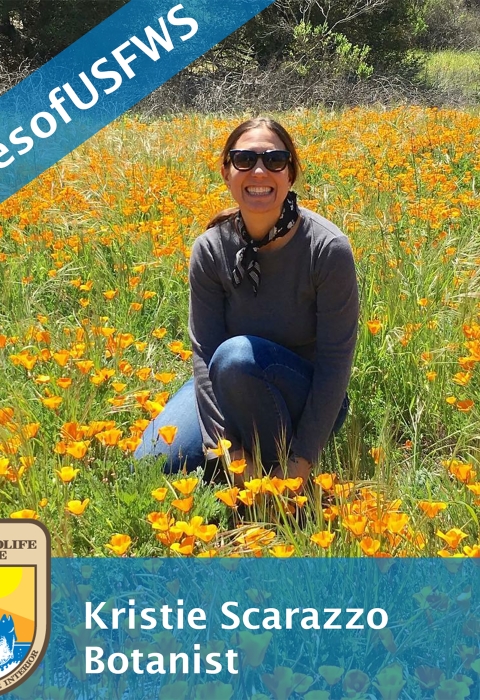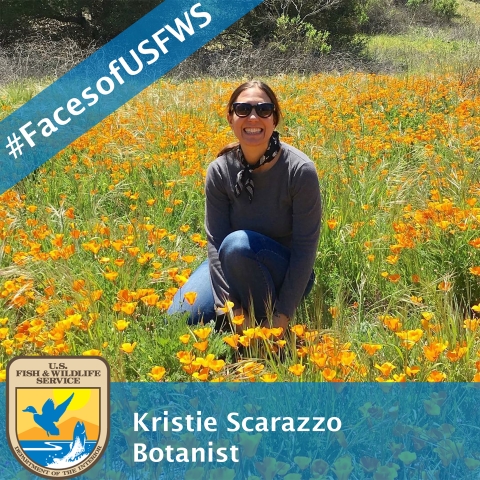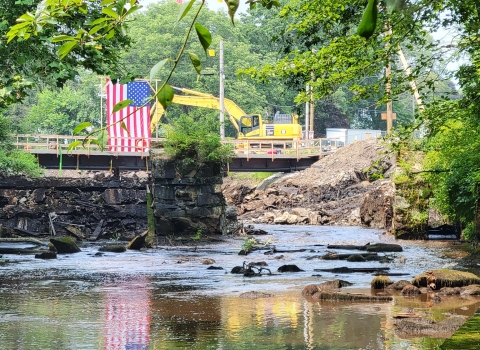Meet one of our newest botanists, Kristie Scarazzo. Kristie was a consulting botanist for private firms in California for approximately 15 years specializing in rare plant surveys, vegetation classification, mapping and wetland delineations. She has taught general botany, ethnobotany and evolution at California Polytechnic State University for four years.
What led you to a career with the U.S. Fish and Wildlife Service?
Throughout my career, I always wanted to do more for the long-term conservation of natural resources and those strategic planning efforts; especially for the botanical resources within the California Floristic Province here because the flora is so unique and this region is a global plant biodiversity hotspot. No other government agency does more for natural resource conservation and it has always been my dream to work for the U.S. Fish and Wildlife Service as a botanist for this purpose.
Where did you go to school and what did you study?
California State University, Sonoma - B.S. Biology/Botany
California Polytechnic State University, San Luis Obispo – M.S. Biology/Botany
Who is your conservation hero or mentor, and why?
I have to say Alice Eastwood, who is one of California’s most famous and rugged female botanists. Ms. Eastwood was self-taught, never received a higher degree, botanized much of California, collected hundreds of specimens, published many articles, was a champion of California botany, received many prestigious awards, was recognized as an expert in a predominantly male-dominated discipline, and retired as the Curator of Botany at the California Academy of Sciences in San Francisco at the ripe old age of 90. She is perhaps most famous for running into the burning herbarium building to save the Academy’s nearly 1,500 type specimen collection during the 1906 San Francisco earthquake. The Eastwood Hall of Botany at the Academy is named in her honor and at least 17 plant species are named for her, including Eastwoodia elegans, and endemic California sunflower. I admire not only her longevity, but also her grit and utter devotion to California botany.
What role do you play as a listing and recovery botanist with the agency?
At the end of the day, my ultimate goal is to prevent the most imperiled plant species from going extinct and to further the mission of our agency. This requires a tremendous amount of collaboration with a variety of stakeholders and partnerships with many different entities. I also strive to help people see and simply consider plants and to value our unique flora as a rich botanical legacy through education, sharing of information, and by instilling a sense of regional pride in our flora because it occurs no place else on earth.
What is the coolest plant that you protect, conserve, restore or educate about? And why?
One of my favorite plant species is the endangered Pismo clarkia. It is one of the most beautiful and stunning flowers because it blooms later in the season, after the grasses have browned. The corollas are hot pink with white centers and it is very showy and vibrant. Its entire range is restricted to the sandy hills of the San Luis Valley, near the community of Edna to the City of Arroyo Grande, in San Luis Obispo County.



